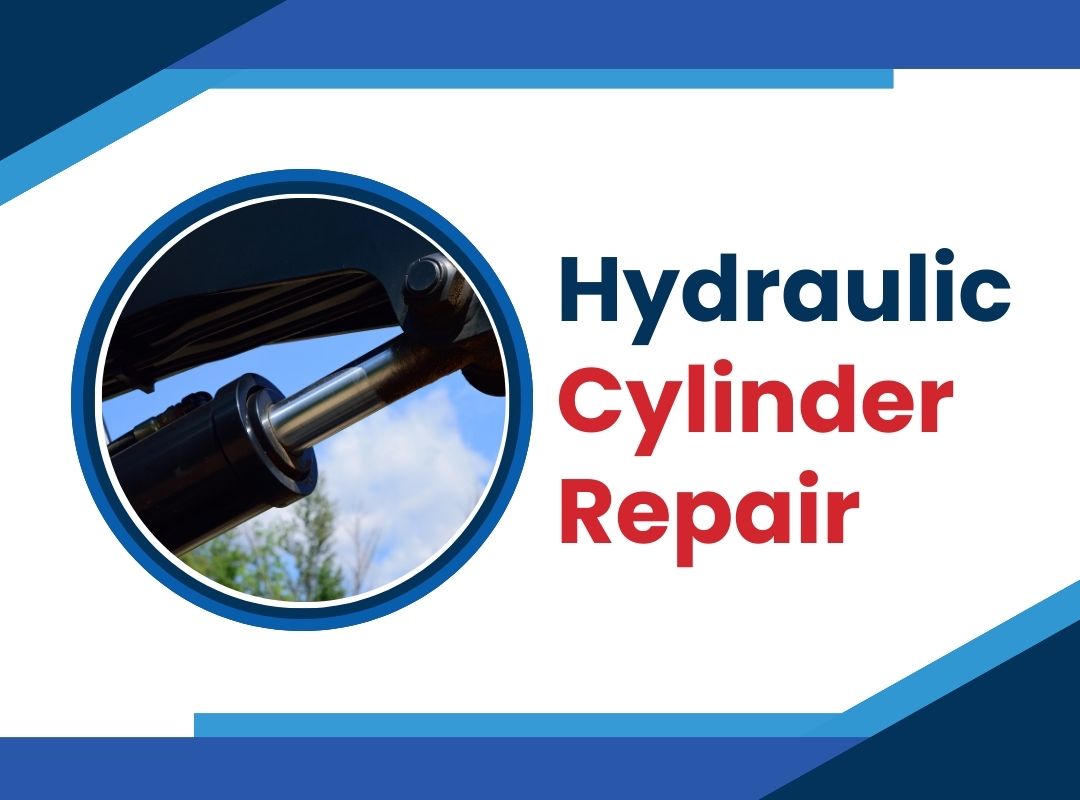Hydraulic cylinders play a significant role in productivity, and thus when they get repaired, it is necessary to recover them quickly. Though the repair process seems quite straightforward, it is necessary to keep certain things in mind if you are doing it for the first time. This article has a quick guide on how to repair hydraulic cylinders. So let’s get started without wasting time.
Things to do Before You Start Repairing the Hydraulic Cylinder
Before you disassemble the hydraulic cylinder, you need to clean it completely so that the dust, grease, or oil present in the unit doesn’t get inside the cylinder unit. Also, it is recommended to perform the repairs in a clean space.
Once the unit is completely cleaned, you can disconnect the hoses and ports. Then open the cylinder ports and allow the hydraulic fluid to drain.
Hydraulic Cylinder Repair
When it comes to hydraulic cylinder types, there are two common ones; it is either a wired ring or threaded head. So here, we will discuss how to repair both types.
Note: All the components must be cleaned using petroleum-based solvent, then blown dry using compressed air before installing and coated with hydraulic fluid before the repair process.
Wired Ring Cylinder Repair
Step 1: Disassembling a Wire Ring Cylinder
1.The rod assembly must first be removed, followed by the external steel wire of the Hydraulic Cylinder Jack. With the help of a mallet and punch tools, push the head into the cylinder tube until the internal groove is exposed. Then the internal wire ring is moved into a position to be removed.
2. Now, to remove the internal wire ring, you need to use a plastic removal ring that comes with the seal replacement kit. This plastic removal ring must be straightened and then inserted into the internal groove with the feathered end pointing into the tube itself.
Ensure that the ring is inserted completely into the groove before the rod is pulled out. Otherwise, it might get stuck and become trapped between the tube and the head.
3. Now, pull the head out of the tube and completely remove the rod. So once the rod is removed, the removal ring must be removed. Then you can easily remove the other parts like locknut, piston, head, and gland.
Step 2: Repairing the Wire Ring Cylinder
Now that the disassembling part is done, you can replace the piston and the locknut. First, rotate the locknut to the exact value based on its size. Then the band must be installed inside so that it compresses the inner wire ring on the head assembly. Also, it is crucial to check that the band clamp cam is not over the top of the ring gap. So once you have placed the band clamp in place, it has to be tightened so that the wire ring gets fixed properly. You can loosen the band clamp to 1/2 turn so that it can slide during the final assembling stage.
Also, remember, when you reassemble the head or gland, you must leave the o-ring dual seal a bit loose on the rod so that it can be easily installed later.
The cylinder tube and piston seals must be lubricated using hydraulic oil and then inserted into the tube. The cylinder head must be tapped in the tube until the band clamp gets slid over and the wire ring is located inside the tube. Now loosen and remove the clamp.
Then the next step is to install the o-ring dual seal. Once it is done, tap the head until the end of it is flush with the tube. The final step is to pull the rod out so that the external wire ring groove is nicely exposed and the ring can be installed.
How to Repair a Typical Threaded Head Cylinder?
First, loosen the set screw and the end cap. Then remove the piston, gland assemblies, and rod. Now remove the piston from the rod assembly by loosening the lock nut. Then slide off the end cap and the gland assembly. Once this is done, remove the seals and inspect the parts of the cylinder.
Once the seals are replaced, reinstall the rod through the gland assembly and end cap. Then you need to secure the piston to the rod with the help of the lock nut. Now lubricate the inside of the tube, and then insert the piston, gland, end cap, and rod and install them. Before installing the cylinder end-cap, use Loctite anti-seize on the threads, tighten the cylinder, and set the screw to the recommended torques.
Things to Look for While Disassembly
Check if the rod is bent or its surface is scratched. If the rod is bent, either it has to be straightened, or it has to be replaced.
If you find the piston eroded or missing, then the drive requires replacement.
Check the rod seal for distortion, i.e., whether it is bent or just worn out. Replace it if the damage is too serious.
Check for leaks in the seals.
Conclusion
The hydraulic tool and hydraulic cylinder repair method need a great deal of patience and focus when doing the repair. Though we have given you the steps to do the repair, it is recommended to seek the help of a professional if you don’t have prior experience in handling this.


